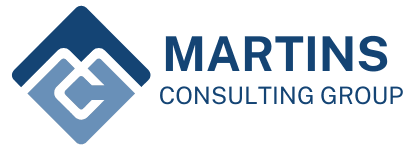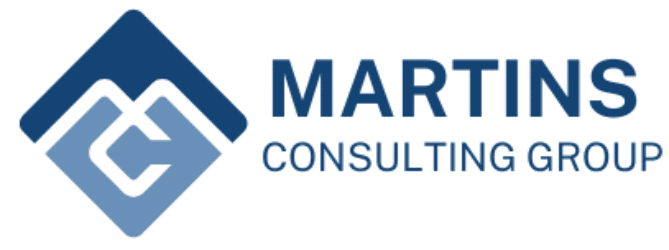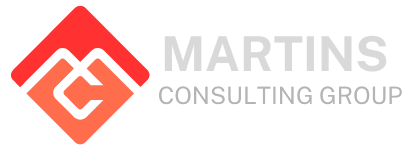Case Study: Cold Storage Warehouse Automation for a Bangalore-based Cold Storage Facility
- Home
- Case Study: Cold Storage Warehouse Automation for a Bangalore-based Cold Storage Facility
Background and Challenges
Martins Consulting, with over 70 years of collective experience in warehouse design, automation, and optimization, was approached by a prominent cold storage facility based in Bangalore. This facility specializes in temperature-controlled storage for perishable goods, which is crucial for maintaining product quality and compliance with industry standards. The facility’s operations were manual and relied on outdated systems, resulting in inefficiencies, high labor costs, and risks to product integrity.
The CEO of Martins Consulting, who brings 25 years of industry expertise, led the project to help modernize the warehouse facility. The client faced multiple challenges due to its aging infrastructure and reliance on manual processes, particularly in a cold storage environment where maintaining optimal temperature and handling perishable goods is critical. The main operational challenges included:
- Temperature Control Issues: The facility had difficulty maintaining consistent temperatures across different zones, leading to temperature fluctuations that could compromise the quality of perishable products.
- Inefficient Inventory Management: Inventory tracking and visibility were poor, resulting in misplaced goods, difficulty locating products, and delays in order fulfillment.
- Manual Picking and Replenishment: Stock replenishment was performed manually, leading to stockouts, excess inventory, and delays in fulfilling orders, particularly for time-sensitive products.
- Congestion and Traffic Flow: Forklifts and human workers often collided or crossed paths in narrow aisles, resulting in congestion, inefficiencies, and safety hazards.
- Labor-Intensive Processes: The manual handling of products in cold temperatures resulted in ergonomic issues for workers and reduced productivity due to the harsh working conditions.
- Contamination Risks: The cold storage facility struggled with maintaining cleanliness and preventing contamination, especially as waste was improperly handled and managed in areas that also dealt with perishable goods.
Given these operational challenges and a growing demand for efficient solutions, Martins Consulting was tasked with devising an automation strategy to help streamline the operations while ensuring product quality and compliance with temperature control requirements.
Evaluation and Analysis
Martins Consulting conducted a comprehensive assessment of the warehouse’s operations. The team analyzed the facility’s storage methods, temperature management systems, inventory handling processes, and fulfillment workflows. The analysis revealed several key findings:
- High Time Spent on Non-Value-Added Activities: Over 30% of operational time was spent on non-value-added tasks such as searching for misplaced products, manually handling goods, and waiting for the cooling system to stabilize temperature zones.
- Temperature Variability: Certain zones experienced temperature fluctuations of up to 5°C, which could lead to product spoilage and quality issues.
- Manual Inventory Management: The warehouse lacked an efficient system for tracking inventory, leading to difficulties in stock replenishment and order picking.
- Safety and Ergonomics Challenges: Traffic congestion, particularly between human workers and forklifts, posed safety risks, while the cold environment caused ergonomic strain on workers handling goods manually.
- Contamination Risks: There was no effective waste management system, which posed contamination risks to the products.
The Recommendations
Martins Consulting recommended a phased approach to addressing the warehouse’s challenges, focusing on automation, temperature control, and process optimization to improve efficiency and safety. The recommendations were structured into three phases: Immediate Improvements, Advanced Automation, and Future Scaling.
Phase 1: Immediate Improvements and Efficiency Gains
- Temperature Control and Monitoring System:
- Implement an advanced temperature monitoring and control system with real-time alerts and automatic adjustments. This system would help ensure that each storage zone stays within the required temperature range for perishable goods.
- Upgrade cooling units with sensors to improve airflow management and reduce temperature deviations.
- Automated Guided Vehicles (AGVs) for Transportation:
- Introduce Automated Guided Vehicles (AGVs) to streamline transportation within the warehouse. These robots would transport goods between temperature-controlled zones, reducing the need for manual handling and optimizing flow, while also reducing congestion and improving safety.
- Improved Inventory Management with RFID:
- Implement a real-time RFID-based inventory tracking system that would allow the warehouse to automatically track and manage products as they move in and out of storage. This would improve product visibility, reduce misplaced stock, and enable more accurate and efficient stock replenishment.
- Redesign Warehouse Layout to Optimize Flow:
- Redesign the warehouse layout to minimize traffic congestion, with separate zones for forklift and pedestrian movement. Dedicated aisles for different temperature zones would ensure safe and efficient product handling.
- Safety Enhancements and Contamination Prevention:
- Introduce a dedicated waste management system that isolates waste from the product handling areas to prevent contamination.
- Implement automated systems for intersection management to avoid accidents between human workers and forklifts, improving overall safety.
Phase 2: Advanced Automation and Process Optimization
- Automated Storage and Retrieval System (ASRS):
- Implement an Automated Storage and Retrieval System (ASRS) to handle high-volume storage and retrieval of temperature-sensitive goods. ASRS would increase storage density, optimize retrieval times, and reduce human intervention, ensuring a faster and more accurate order fulfillment process.
- Robotic Palletizing Systems for Outbound Shipments:
- Introduce robotic palletizing systems to automate the process of building pallets for outbound shipments. The robotic arms would be programmed to handle specific customer requirements, such as packaging, labeling, and stacking, reducing labor costs and ergonomic risks.
- Predictive Maintenance for Cooling Systems:
- Install predictive maintenance technology for the refrigeration units and other critical equipment. This would allow for early detection of issues before they cause major failures, ensuring continuous operation without interruptions in temperature control.
- Integration with Warehouse Management System (WMS):
- A new Warehouse Management System (WMS) would integrate the inventory system, temperature control, and automation systems into a seamless solution. This WMS would provide real-time data, improve inventory accuracy, and optimize the flow of goods in and out of the warehouse.
Phase 3: Future Scaling and Continuous Improvement
- Expansion of Automation Systems:
- As the demand for storage and fulfillment increases, Martins Consulting would look into further scaling automation with additional ASRS units, robotic systems, and advanced artificial intelligence (AI) solutions to optimize forecasting, inventory management, and operations.
- Continuous Improvement through Data Analytics:
- Use data analytics to continuously monitor warehouse performance, identify bottlenecks, and optimize processes. Predictive analytics could help the facility prepare for seasonal demands and optimize stock levels.
The Results
Following the implementation of Phase 1 improvements, the cold storage facility experienced immediate benefits. Non-value-added time was reduced by 40%, and the temperature fluctuations were minimized to under 1°C across all zones. AGVs streamlined internal transportation, reducing congestion by 50%, while the RFID system increased inventory accuracy and reduced stock misplacement.
In Phase 2, the introduction of ASRS and robotic palletizing systems improved operational throughput by 30%, and the predictive maintenance system ensured continuous operation, minimizing downtime. The new WMS integrated all systems, offering real-time data and enabling more efficient order fulfillment.
Martins Consulting’s phased approach successfully modernized the warehouse, improved safety, reduced labor costs, and enhanced overall operational efficiency, positioning the cold storage facility for future growth and increased demand for temperature-controlled storage solutions.


